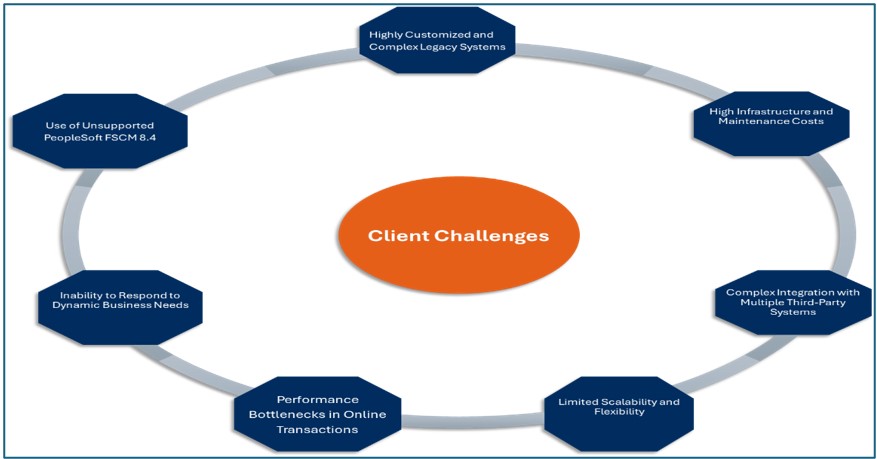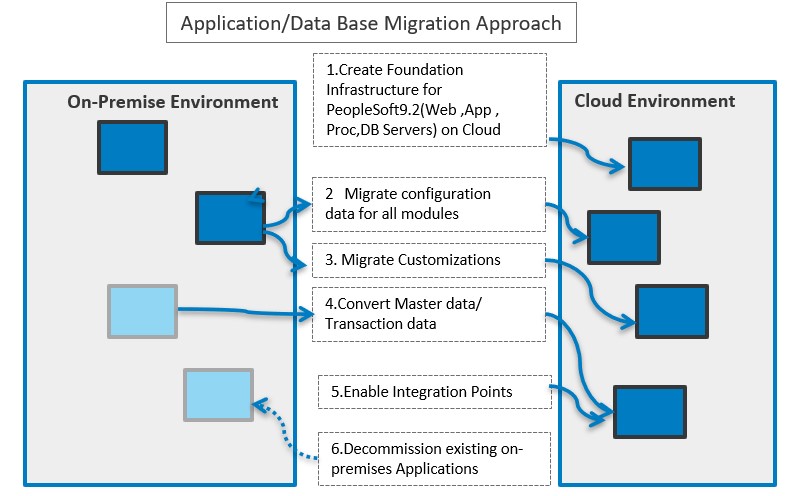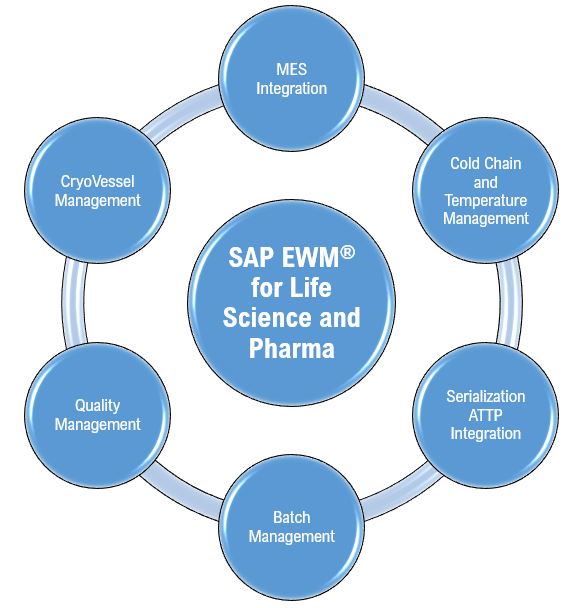Our client, a global leader in enhancing hotel guest experience, faced significant challenges with their legacy IT infrastructure. With operations spanning nearly 25,000 hotels across 88 countries, they needed a robust, scalable, and secure solution. This write-up explores how Infosys successfully migrated their core enterprise systems to Cloud, addressing immediate challenges and positioning them for future success with a modern, cloud-native platform. They have built a strong reputation over three decades through:
- Industry Expertise
- Service Excellence
- Manufacturing Strength
- Global Sourcing and Distribution
- Continuous Product Innovation
Cloud Migration Advisory:
Choosing AWS as your migration provider after comparing it with Azure and Google Cloud Platform (GCP) is a strategic decision that can offer numerous benefits. Here are some thought leadership points to consider:
- Comprehensive Service Offering
- Market Leadership and Innovation
- Cost Efficiency
- Security and Compliance
- Migration Tools and Support
- High Availability and Disaster Recovery
- Current Market Trends in AWS Cloud Migration
The client’s legacy IT infrastructure was no longer aligned with their fast-evolving business demands. Infosys was selected as a strategic transformation partner to lead the migration of core enterprise systems—PeopleSoft Financials, HighJump Inventory Management, e-commerce, and data warehouse platforms—to a secure and scalable AWS Virtual Private Cloud (VPC).
Migrating to AWS can be a game-changer for your organization, offering a blend of reliability, innovation, and cost-efficiency.
Why We Chose AWS:
The client faced several critical challenges with their on-premises IT infrastructure:
1. Inability to Scale with Business Growth
Provisioning new infrastructure for projects took months, delaying time-to-market.
AWS offers on-demand provisioning of resources, enabling rapid deployment and scalability aligned with business needs.
2. High Infrastructure Costs with Poor Visibility
The client incurred high capital and operational expenses without clear insights into resource utilization.
AWS provides pay-as-you-go pricing, cost optimization tools, and detailed usage analytics, helping reduce waste and improve financial governance.
3. Lack of Elasticity for Seasonal Demand
The existing infrastructure couldn’t handle seasonal traffic spikes, leading to performance issues or overprovisioning.
AWS enables auto-scaling and elastic load balancing, ensuring performance and cost-efficiency during fluctuating demand.
4. Limited Control and Governance
The client lacked centralized control, leading to inefficiencies and compliance risks.
AWS offers robust governance tools, including AWS Organizations, IAM, and CloudTrail, to enforce policies, monitor activity, and ensure compliance.
Key Challenges Addressed

Infosys Solution Highlights
Infosys designed, implemented, and supported a highly available, scalable, and secure PeopleSoft FSCM 9.2 environment on AWS. Additionally, Infosys developed a roadmap for transitioning the in-house datacenter, which includes PeopleSoft Financials, High Jump Inventory Management System, and its related e-commerce and Data Warehouse systems, to a highly secure Amazon AWS Virtual Private Cloud.
Solution Components
- AWS VPC Peering: Enabled secure and direct communication between two virtual private clouds (VPCs) within AWS.
- Barracuda Web Application Firewall (WAF): Implemented and configured for enhanced security.
- Barracuda ELB (Load Balancer): Implemented and configured to distribute incoming traffic automatically and efficiently.
- Network Address Translation Gateway (NAT): Used to enable instances in a private subnet to connect to the internet or AWS services securely.
- Multiple AWS Availability Zones (AZs): Leveraged for failover to ensure high availability and disaster recovery.
- PeopleSoft 9.2 Infrastructure AWS Conceptual Design: Developed a future state design on AWS infrastructure to support scalability and performance.
- High-Level Design (HLD) / Low-Level Design (LLD): Developed HLD and LLD to ensure scalability and performance
AWS Migration Approach
Infosys adopted a phased migration strategy to ensure business continuity and system integrity.
1. Foundation Setup
Created the AWS VPC
Provisioned Infrastructure for PeopleSoft 9.2 (Web, App, Process Scheduler, DB Servers)
2. Data & Customization Migration
Migrated Configuration and Master Data Across All Modules
Migrated Existing Customizations and Implemented Gap-Based Enhancements
Converted Transactional Data into AWS-Hosted PeopleSoft Instances
3. Integration Enablement
Reconnected and Validated All Third-Party System Integrations on AWS
4. Batch Process Configuration
Recreated and Optimized All Batch Jobs in the New AWS Environment

Infosys Tools/Accelerators Leveraged
iClone: Environment Cloning and Configuration Replication
- End-to-End Database Refresh/Cloning Tool
- Single Node to RAC and Vice Versa Cloning
- Elimination of Human Intervention During Off-Hours
Health Check Dashboard:
- Detailed daily health check report and Dashboard
- Server health – CPU, RAM, IO details
- Job status, long running sessions
- Dashboard view of critical DB and Server components
Business Value Delivered
1. Enhanced Quality of Service
- Upgraded to PeopleSoft 9.2 and People Tools 8.55
- Enabled Modern UX Features: Dashboards, Workcenter, Pivot Grids
- Reduced Customizations Improved Maintainability and Upgrade Cycles
2. Cost Optimization
- Eliminated On-Prem Hardware and Associated Costs
- Reduced Infrastructure and Support Overheads Significantly
3. Performance Improvements
- Achieved Up to 75% Performance Improvement Over the Legacy Environment
- Realized 20% TCO Reduction and 30% SLA Improvement
4. Next-Gen Infrastructure
- Introducing Cloud-Native Agility and Flexibility
- Enhanced Reliability and Scalability to Meet Future Business Needs
Benefits of Migrating to AWS Cloud
- Easy to Use: Simplified Enterprise Workload Hosting
- Highly Flexible: Supports Varied OS, Databases, and App Stacks
- Secure: End-to-End Security for Network, Physical, and Data Layers
- Cost-Effective: Pay-As-You-Go Model, No Upfront Investments
- Reliable: Global Infrastructure with High Availability and Redundancy
- Scalable & High-Performance: Elastic Load Balancing and Auto Scaling
Referenced used for future AWS migration
While the migration was successful, several technical and operational insights were gained:
- Minimum disk IOPS required for Oracle Database running PeopleSoft is 6000.
- Avoid deploying App Servers and Web Servers across multiple AZs—this caused latency issues. Use multi-AZ setups only for failover.
- SoftNAS Cloud Storage had issues with AD authentication—consider alternatives.
Conclusion:
Through this successful AWS migration of PeopleSoft FSCM 9.2, the client moved from a constrained, legacy ERP system to a modern, cloud-native platform. The transformation not only improved performance and reduced costs but also achieved up to 75% performance improvement over the legacy environment and realized a 20% TCO reduction and a 30% SLA improvement. This also enables the agility and scalability necessary for ongoing innovation and growth.










very well written article. Please keep them coming
“Great Work! The migration to AWS clearly demonstrates the tangible benefits of moving from a legacy ERP to a modern cloud platform. The 75% performance improvement and 20% TCO reduction are especially impressive. It’s inspiring to see how strategic cloud adoption can not only enhance operational efficiency but also support long-term scalability and innovation. Well Done!”
The blog highlights how Infosys used AWS to modernize a global hospitality client’s PeopleSoft FSCM 9.2 environment. The migration to AWS offers clear benefits, including on-demand provisioning, cost optimization, and improved governance.
Notably, the transformation yielded a 75% performance boost and a 20% reduction in total cost of ownership (TCO). The discussion of AWS tools and features such as IAM, CloudTrail, and auto-scaling demonstrates a strong grasp of cloud-native capabilities.